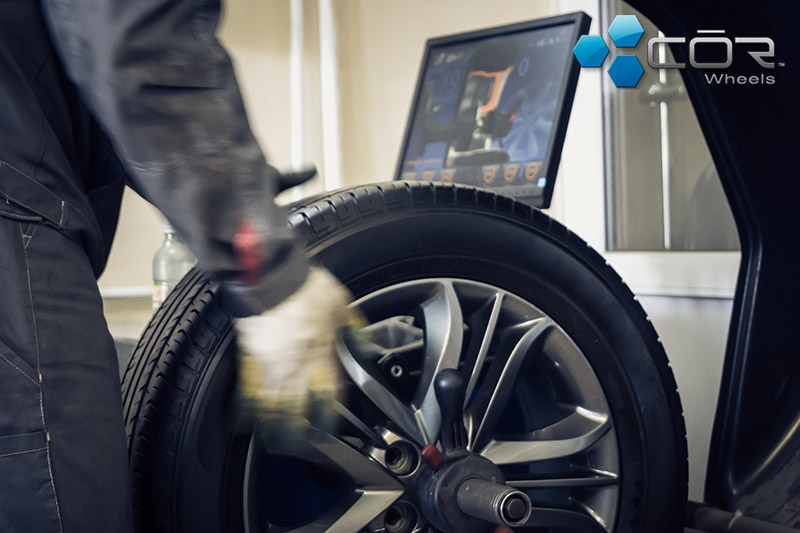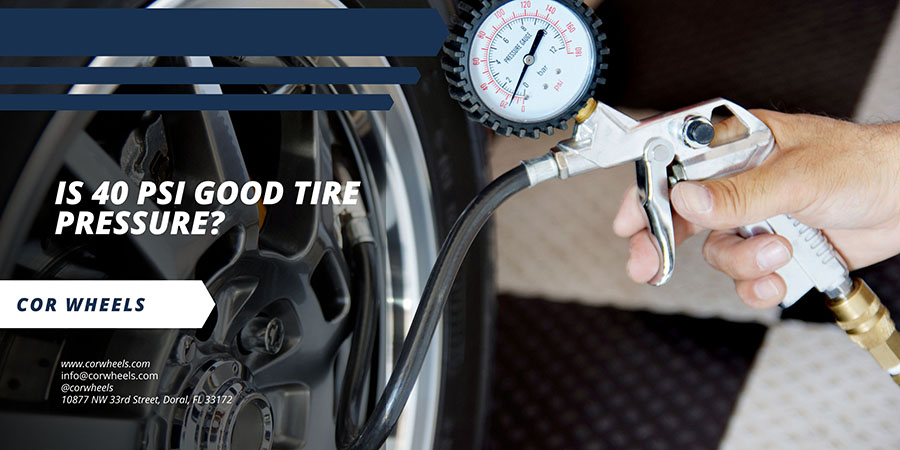Car owners surely find tire balancing no stranger when they learn about the correct vehicle maintenance process. At first glance, the service should come first to save you from more expensive repairs. It gives you a smooth driving experience and prolongs the life of your vehicle. So what exactly is tire balance? Scroll down to learn.
In this article:
What Does It Mean To Balance Tires?
Wheel balancing refers to adjustments on the wheel and tire assemblies. Its main purpose is to correct uneven weight distribution across the entire circumference of the tire.
It also helps to address the symptoms of unbalanced wheels, such as vibrations, strange noises, excessive wear, or damage to the bearing and suspension systems.

Mechanics often use tire balancers for this service. They attach the wheels and tires to specialized equipment to measure the condition. The device will show lighter areas than the rest. The experts then set the additional weight to add to these positions to achieve balance.
Types Of Tire Balancing
Static Balancing
This method suits old-school car rims that use narrower tires than modern models. It determines the tire’s balance point based on the rotation axis. In simple terms, the tire is attached to a freely rotating shaft.
It stays still no matter how hard you try if it reaches a good state. On the contrary, its heavy spot turns downward once the weight is not evenly distributed. The mechanics then place suitable weights opposite the heavy areas to adjust the equilibrium of the tires.
Dynamic Balancing
The dynamic method is born for modern tires with a footprint of at least 4 inches wide. The larger the tire and wheel combination, the more effective this approach is.
In this case, the imbalance will steer the point of the axle towards the point of rotation. In other words, the attached tire wobbles in different directions (side-to-side motion). At the adjustment step, an equal amount of weights is added on the opposite side of the imbalance (diagonally).
Road Force Balancing
It is now the latest technique based on road condition simulations. It sets up a large roller that exerts pressure on the tire and a computer program to check for imbalance.
This state-of-the-art setup allows you to check the tire condition even in complex cases. A trained technician then provides the best diagnosis, including the cause and resolution of wheel imbalance.
Benefits Of Tire Balancing

Smooth And Safe Ride
When the weight difference in a tire (or more) is too much, vibration interferes with your driving experience. Vibrations spread to many parts, especially when you reach high speeds.
This is even more evident with modern tires. These items have narrower sidewalls and are more sensitive to imbalances. Hence, the biggest benefit of balancing is a smoother running tire.
This service also eliminates the risk of accidents due to dents or worn treads. Routine maintenance helps you spot damage early and get your car back to top condition.
Better Gas Mileage
An unbalanced tire generates more traction when in contact with the road. As a result, the engine consumes more fuel to operate at its optimum, thereby reducing fuel economy. Uniform gravity distribution enhances tire performance and gas efficiency.
Extended Tire Life
As you have seen above, uneven tire wear is also a symptom of unevenness. It is not surprising that it shortens the life of the tire. Therefore, early treatment gives your tire set a longer life.
Protection Over Suspension System
Remember that damage can claw its way to relevant parties if you hesitate to act quickly. For example, vibrations eventually appear on the suspension after a while. Balancing wheels before it’s too late will only cost you less than $100, or you will pay huge sums for large-scale repairs.
How To Tell Which Tire Is Out Of Balance?
Vibrations are the most obvious sign of unbalanced tires. They usually start on the drive wheel and then move to other positions, such as the front and rear seats. You can also pay attention to some other symptoms to draw accurate conclusions:
- Equal tire wear
- The buzzing or humming noise
- Worn shocks and bearings
- Reduced fuel economy
- Less responsive control
How Much Does It Cost To Balance Tires?
A full service on four tires typically costs $30 – $100, depending on carrier and model. Note that car dealerships often have higher prices than tire shops or local mechanics.
It is cost-effective if you invest in lifetime packages of famous auto centers like Walmart or Costco. You can also cut your bill with discounts or great deals on tire purchases.
Wheel Alignment vs. Balance: What Are Differences?
Some people confuse these two concepts, but they are not the same. While tire balancing works directly on the tire, the alignment job refers to the suspension system (the large part that connects the tire to the axle). Simply put, the first adjust the weight distribution inside the tire, while the latter reposition the wheel.
The problem that causes misunderstandings between tire balance vs alignment is their similar symptoms, such as wobbling, uneven wear, fuel consumption, etc. Honestly, it is hard to distinguish between the signs. Some of the common differences are shown in the table below.
| Balancing | Alignment |
| The vehicle pulls to one side, or the steering wheel is not in the center position on a flat road. | The steering wheel is shaking. |
| Types of uneven wear: – Sawteeth – One-side shoulder wear – Feathering | Types of uneven wear: – Scalloped – Cupped |
Last but not least, wheel balancing improves the smoothness and safety of your ride. In comparison, the top goal of tire alignment aims to increase grip on the road.
FAQs
How Often Should You Have Your Tire Balanced?
Most experts recommend this maintenance at least every six months or every 5000 miles. However, visit the mechanic immediately when you encounter the symptoms mentioned above.
How Long Does It Take To Balance Tires?
A complete service usually takes 30-45 minutes except in complicated cases. You can get your car out of the auto center sooner if more than one mechanic works on your vehicle.
Can I Balance My Own Tires?
YES, but it is better to have a balancer ready. Only then should you DIY. Otherwise, letting a qualified mechanic do it for you is always a wise move.
Conclusion
After a period of use, the wheel loses weight for various reasons. It still has consequences, even if it is a small fraction of an ounce. That’s why it is important to understand the nature of wheel balancing and catch the early signs. Get your car to a mechanic before it’s too late.








